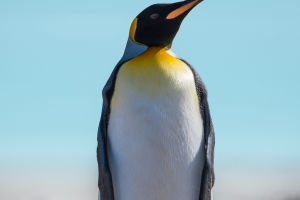The owl, also known as the "owl", is found on all continents except Antarctica. The birds of this order have a broad head, a short, stout beak with a hooked front, and the feathers on the front of the head are arranged in a disc, and some species have ear-like feathers.
Because of the distribution of its binoculars, the facial disc and ear feathers make the head of this order of birds very similar to that of a cat, hence the common name owl.
Also known as the sacred owl. The owl likes to sleep in the foliage during the day and emerge at night to feed, making it an expert mousetrap in the forest. The owl's eyes are in front of its head, unlike other birds, so it has to keep turning its head when it wants to see all around.
An owl is an owner-aware animal, especially if it has been raised by a human. It will treat its keeper as its mother and will only eat what that person feeds it. Therefore, if you do keep an owl, you will lose all your long holidays and golden weeks in your life. We should know that the larger owl species can live for 30 years or so, and the smaller ones can live for 10 years or so.
Although owls recognise their owners, owls are not at all close to people. Despite the word cat, they do not like to be hugged and patted like cats do. Even owners who touch them easily will be pecked. They are also very wild and owls don't take kindly to putting their claws away like cats do, which can be quite serious.
Owls mainly inhabit coniferous and mixed coniferous forests, especially mixed forests dominated by pine, birch and aspen. Owls tend to hide in dense forests off the beaten track during the day, and they often roost in the dense foliage of the tree canopy or in tree cavities.
The owl is mostly solitary and has no migratory behaviour, but in autumn and spring it often wanders into forests at lower altitudes, and it also likes to move around homes. The owl gives an eerie and frightening appearance due to its varied call, which is like a flute, repeated every few seconds and constantly alternating, hence the name owl. Its flight is fast and straight, with a slightly wavy flight. The owl feeds mainly on rodents. Owls also eat insects, small birds and frogs.
The owl can hunt in flight, or perched in trees, the owl waits for its prey to appear before striking.
Owls are far removed from other birds in terms of morphology and behaviour. Owls make up about 2% of the world's 9,700 species of birds, many of which are threatened with extinction. Because owls are not easy to study and observe, there are some specious ideas about owls, such as hearing the owl's call means bad news is coming. This is due to a lack of understanding of owls and a misunderstanding of these lovely and beautiful birds.


